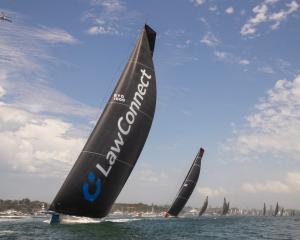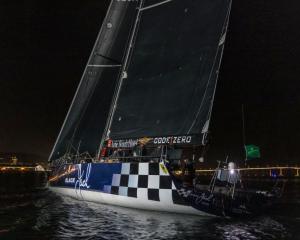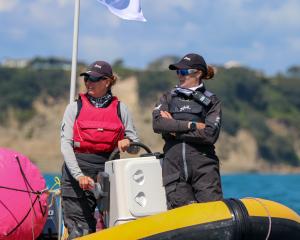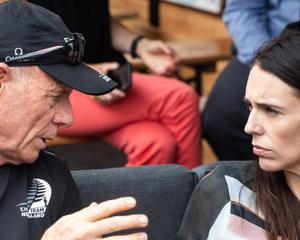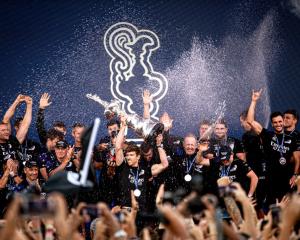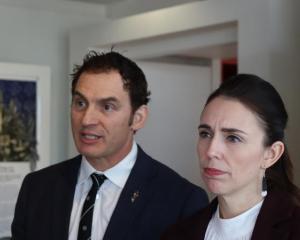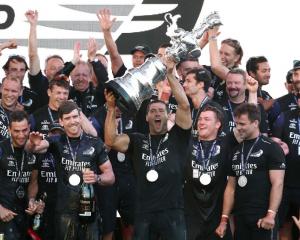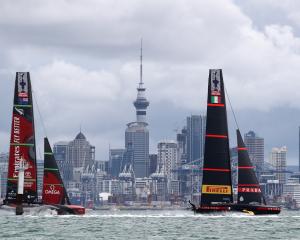The master plan was to lift the America's Cup out of the doldrums with the most extreme, technologically advanced racing in the competition's 162-year history.
The reality was instead splayed out in San Francisco Bay - a sailor dead, an event in turmoil. Russell Coutts and Larry Ellison now face the improbable task of salvaging their America's Cup dream.
When Artemis capsized yesterday, trapping British sailor Andrew Simpson, 36, under its platform long enough for him to drown, nobody could claim it was a freak accident; that you couldn't see it coming. A few months ago sole defender Oracle also capsized. On that occasion everybody survived largely unscathed, but serious questions were already being asked about the boat's integrity, not just in high winds but also in certain tidal conditions.
None of the criticism can be labelled knee-jerk reaction, either. Recently, Paul Cayard, Artemis CEO and tactician, predicted another team would suffer the same fate as Oracle last year. How eerie his words, given to Wired magazine, now seem.
"It will be a miracle if we get through the summer without it happening to somebody [else]. We're going to start pushing harder, we are going to race, and those type of boats - catamarans - tip over."
The giant 72-foot cats, with their 13-storey rigid wing are no longer looked upon as the craft that could revive the America's Cup, but as the headline in Wired suggested: "The Boat that Could Sink the America's Cup."
The biggest, fastest and, this is the important selling point, most television-friendly cup regatta in history is on the rocks.
Crippling costs associated with the new class meant only three challengers were lining up for the Louis Vuitton Cup, the challenger series that would determine who faced Oracle in the America's Cup proper. When the plans for the regatta were originally sketched out, it was hoped there would be 14 of these giants on the start line.
Coutts knows he got it wrong.
In an interview with the Herald in October, the four-times America's Cup winner said: "In hindsight, I think there were two errors. One was I thought the boats needed to be quite large-scale to be grand enough for the America's Cup. Clearly the world series has proven this wrong - the AC45s [a scaled-down catamaran class] look pretty damn good on TV. The other thing is, we possibly should have looked at making more of the components one-design."
He was right to be worried. The AC72s were coming under fire from many quarters, and the artillery will only increase in scale and scope with the death of two-time Olympic medallist Simpson.
Sailing commentator Peter Lester said while he was one of the many observers who had expressed their reservations about the safety of these boats, he also thought "shit, I hope I'm wrong". Now his worst fears have been realised, Lester said there needs to be serious questions asked of the design.
"You've got to go back and ask questions over the whole concept of the boat - the size, the horse-power, the technology of the boat, the ability to sail the boat safely given what it is, and I'm sure that question will come back quite strongly on Russell [Coutts]," said Lester.
"When you have a difficult piece of hardware, it's takes people time to learn how to sail it properly and safely and optimise it. And time is something these teams have not had with this campaign."
In the short term, the America's Cup machine will mourn the loss of a good man. In the long term, we can safely assume this will be the last time AC72s are raced for the Cup, but it is the medium term where all the questions lie.
Will Artemis continue? Will the format of the competition remain the same? What would it take for the whole event to be cancelled, with the loss of jobs, hundreds of millions of dollars, leaving behind a red-faced billionaire in Larry Ellison and a chagrined Cup legend in Coutts.
And what of the sailors?
Team New Zealand grinder Chris McAsey, who has been responsible for helping develop his team's safety gear, told the Herald in February the realities of the new high-danger came as a shock:
"The thing that really put the shits up me was the rescue guys came in with St Johns one day and we had a meeting about what would happen in the worst-case scenario and how everything would play out.
"One of the guys in the chase boat was given the job of recovering bodies - that was when it really hit home," he said.
- By Dylan Cleaver and Dana Johannsen of the New Zealand Herald


